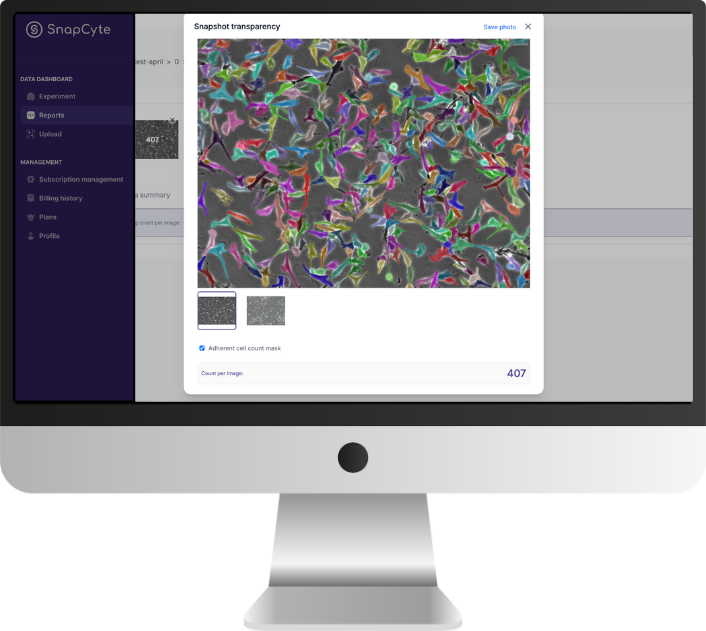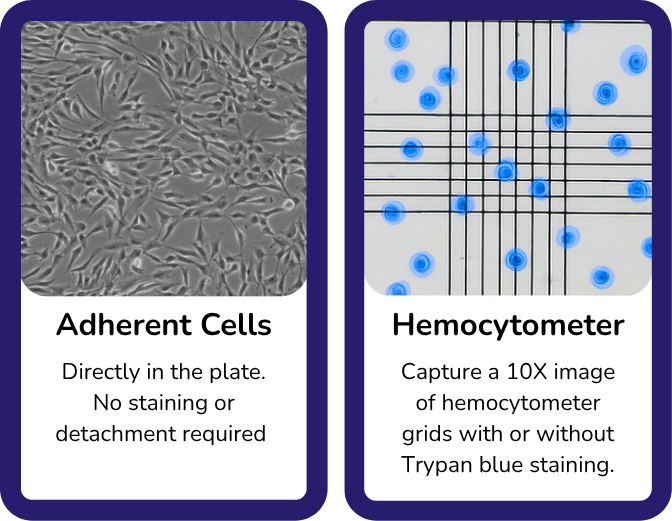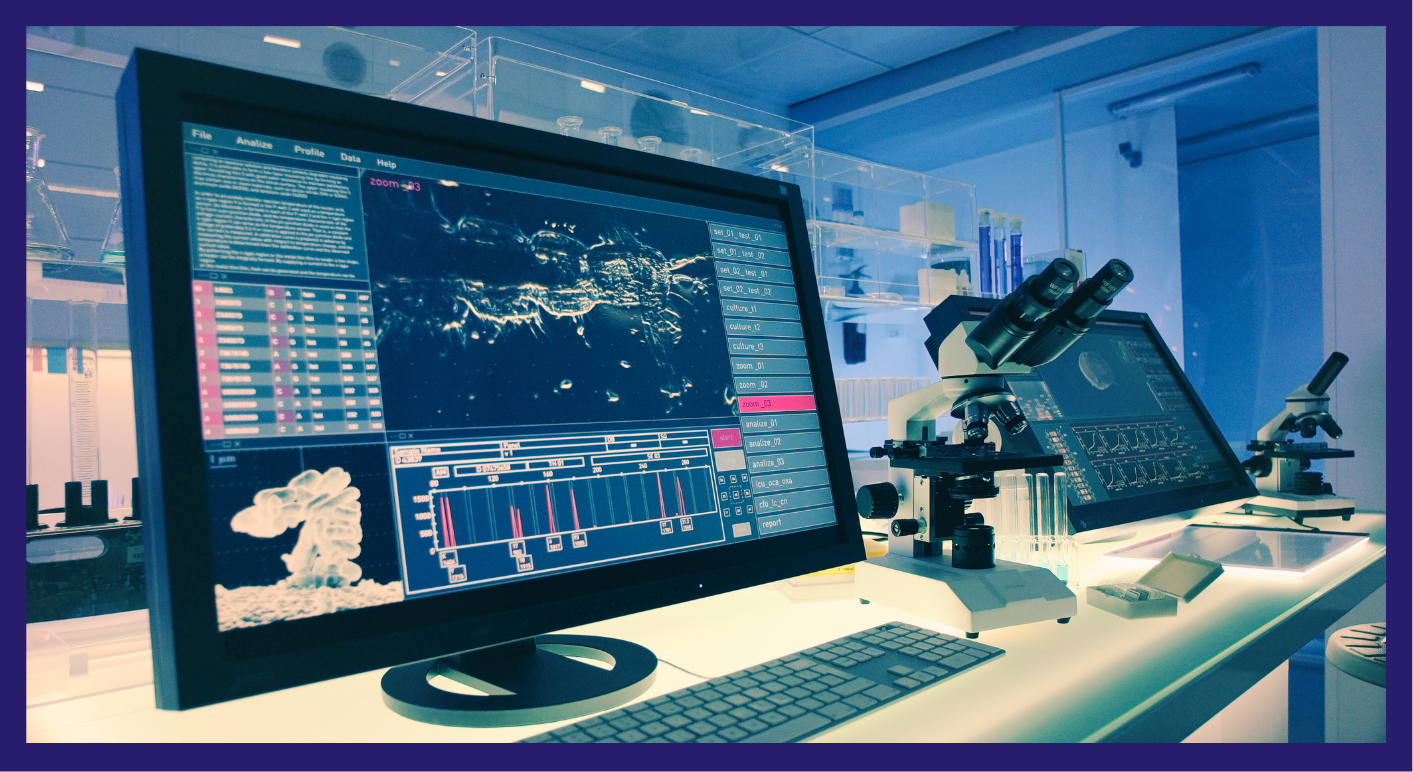AI-Powered Cell Counting for Every Workflow
Accurate AI Cell Count in Seconds
Manual cell counting remains standard practice in many research labs, especially for complex or sensitive samples. However, whether you’re working with adherent cells in culture plates or suspension cells using hemocytometers, SnapCyte™ gives you fast, accurate, and reproducible cell count results using AI-based image analysis. The platform adapts to your workflow—no special hardware, no guesswork, and no manual thresholds.


How it works
How SnapCyte™ Performs Cell Count Across Sample Types
SnapCyte™ supports both adherent and suspension cell counting, offering consistent results in seconds.
For adherent cells, simply upload brightfield or phase-contrast microscope images. Because SnapCyte™ can segment individual cells even in dense or irregular cultures, you don’t need to detach or stain them.
For suspension cells, just use your smartphone and the SnapCyte™ App to capture a 10X image of your hemocytometer. The AI detects gridlines, counts cells, and calculates concentration and viability based on stains like Trypan Blue or Erythrosin B.
As a result, SnapCyte™ streamlines your process and produces reproducible outputs in under 30 seconds per image.

Why Use SnapCyte™ for Cell Count?
High Accuracy: Trained on real microscopy images, not synthetic data.
Works with Your Setup: Supports hemocytometers, plates, and custom formats.
Faster Than Manual Counting: Processes each image in under 30 seconds.
Minimizes Waste: No need for disposable slides or extensive reagents.
Reproducible Across Users: Eliminates bias in cell count and viability.
Get Your Free Academic License
SnapCyte™ is free for academic researchers. Skip the tedious manual counting and let AI handle your cell count—faster, greener, and more reproducible. No coding, training, or manual setup needed. Just upload your images and start analyzing immediately.
Frequently asked questions
Most Frequent Questions and Answers
What types of hemocytometers are compatible with SnapCyte™?
SnapCyte™ can work with various hemocytometers, but the automated calculation is specifically designed for those with a 0.1 mm chamber depth. Compatible types include Neubauer, Improved Neubauer, Bürker, and Bürker-Türk hemocytometers. While SnapCyte™ can still process images from hemocytometers with different depths, you will need to manually adjust the calculations.
Can SnapCyte™ count adherent cells directly in culture wells?
Yes. SnapCyte™ is optimized for both suspension and adherent cell formats.
What magnification should I use for capturing images?
Use 10X magnification to ensure clear imaging of the hemocytometer’s grid lines and cells.
Do I need viability dyes for accurate cell counting?
For viability assessment, Trypan Blue is supported.
Can SnapCyte™ handle clumped or overlapping cells?
Yes. The AI is trained on complex samples and can segment overlapping cells with high precision.
What should be the dilution factor in sample preparation for using a viability stain?
When using a viability stain like Trypan Blue (TB) or Erythrosin B (EB), a 1:1 dilution is recommended. SnapCyte™ automatically accounts for this dilution factor when calculating cell concentration.
What is the dynamic range of cell counts with SnapCyte™?
SnapCyte™ offers a much higher dynamic range of cell counting compared to manual methods, capable of accurately counting up to 10^7 cells. This extended range allows for precise analysis even in highly concentrated samples.







